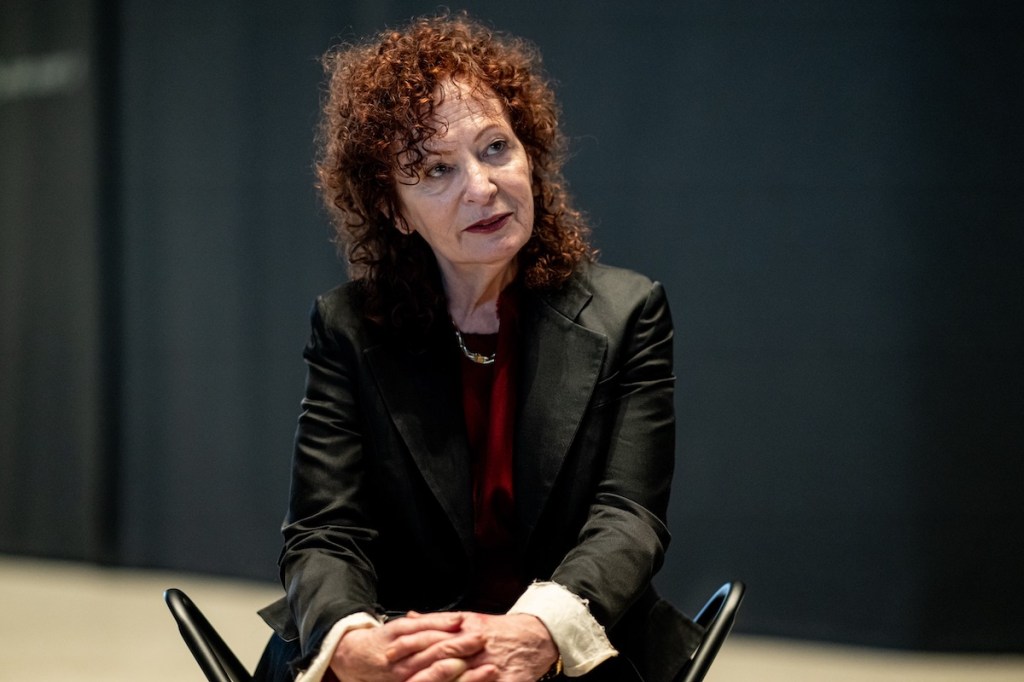The core function of the documentary is a highly debated one — Scottish filmmaker John Grierson’s definition of the art form as the “creative treatment of actuality” is commonly referenced.
When it comes to articulating Black stories, however, the function of the documentary extends past recounting and veers into correction, adding texture and giving structure to misshapen histories.
Enter “Little Richard: I Am Everything,” a cinematic effort by director Lisa Cortés to bear witness to the story of Richard Penniman, a trailblazer whose influence on the trajectory of popular music as a queer artist born of the Southern Black church was shrouded by his later canonization as caricature-cum-evangelist.
“We did a very deep archival dive to make certain that Richard could tell the cradle-to-grave journey that he was on,” Cortés said. The documentary uses footage ranging from late-night talk show interviews to his famed 1997 appearance at the American Music Awards where he declared, “I am the originator, I am the emancipator, I am the architect of rock ‘n’ roll … I’m the man that started it all.”
By interspersing this footage with insights from ethnomusicologists, musicians, theologians and cultural experts, a narrative mosaic emerges that amplifies Little Richard’s contributions to queer Black music history as much as it contends with his contradictions.
Where the documentary shines is in grounding Richard’s queer legacy, particularly as an artist who largely speaks about his queer experience in the past tense. Richard was greatly influenced by the melodies of Sister Rosetta Tharpe, opening for her when she performed in his hometown of Macon, Georgia; openly gay blues singer Nick Wright helped Richard form his signature pompadour, pancake makeup and pencil-thin mustache; gay R&B singer/songwriter Esquerita taught Richard the piano.
He mastered showmanship not only in church but also on the Chitlin’ Circuit, where he occasionally performed in drag under the alias Princess Lavonne.
“This continuum of, for Richard, of a community that has been vibrant and making great contributions creatively was really important to posit,” Cortés explained, noting how new anti-LGBTQ+ legislation is fighting against the very queer drag legacy that helped shape such a legend. “These [are] queer figures in rock ’n roll who see him, embrace him, and are a part of affirming him and his trajectory as an artist.”
“You don’t have a Lil Nas X if you don’t have Little Richard. You don’t have Prince. You don’t have so many incredible artists if he had not laid a foundation.”
– Lisa Cortés, director
Brief clips of Richard’s performances offer insight as to just how transcendent and innovative he was in his time, from his ribald approach to lyricism, sequin-heavy costumes and use of the piano as a percussive tool to his commitment to theatrics in his shows. That footage is sparse, but enough to showcase how Elvis Presley’s and Pat Boone’s covers end up falling comically short of Richard’s spirit, despite outselling his hit “Tutti Frutti.”
Unfortunately, the clips highlight not only the shortcomings of non-Black interlopers but also how the gifted contemporary musicians the film enlists to portray various pivotal moments in Richard’s history, including singer-songwriters Valerie June and Cory Henry, end up burdened by the weight of his legacy.
Cortés said she included these moments as “dreamscapes” and not reenactments, intended to function as pieces of magical realism that immerse you in the connective tissue between contemporary artists and Richard’s legacy. But in the absence of more original audio of Richard’s performances, a vacuum emerges that the extremely talented artists cannot fill.
Richard’s flamboyance takes center stage throughout the documentary, showcasing how it helped craft the myth and the legend of Little Richard at the expense of the man. His flamboyant acknowledgment of his contemporaries often made plain his musical legacy, and he freely stated that he opened the doors for the likes of James Brown, the Rolling Stones and the Beatles.
When a crisis of faith sent Richard rushing back to the church home that reared him, he repented of the queer life he had built for himself and chose to redirect his flamboyance into evangelism instead.
In the documentary, Cortés interrogates how the tentpoles of faith and queerness shaped Richard’s life trajectory, ultimately resulting in a transgressive figure who struggled with what he felt were inherent contradictions. There’s a sense of melancholy acknowledgment that Richard was able to liberate others at the expense of himself, yet another sacrifice for being a trailblazer.
“I’ve always loved seeing the resonance of Richard in our culture,” Cortés reflects. “You don’t have a Lil Nas X if you don’t have Little Richard. You don’t have Prince. You don’t have so many incredible artists if he had not laid a foundation.”
If Black music is a wellspring for popular music, Little Richard’s legacy is a current that runs through it, molding music’s evolution over generations even while his own persona was reduced to caricature.
The ultimate triumph of the film is in making Richard’s story visible in as close to his own terms as possible; it showcases that his art was a bright, explosive mosaic made up of all his forebears’ and contemporaries’ influences but amounting to more than the sum of its parts. Most pivotally, the film bears witness to the claim that the Black American South’s rock ’n’ roll legacy is an inextricably queer one, defined by the rebel energy that punctuates American gospel music.
As a corrective, it successfully rejects the obliteration of Richard’s legacy and portrays a nuanced struggle — making explicit the deleterious impact of cultural appropriation. It is a story of transgression as much as it is a story of reclamation; it is a tragedy that he never got to see these laurels in his lifetime.
“Little Richard: I Am Everything” streams on Hulu Friday.










